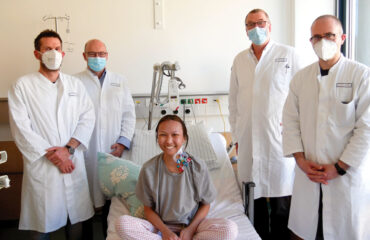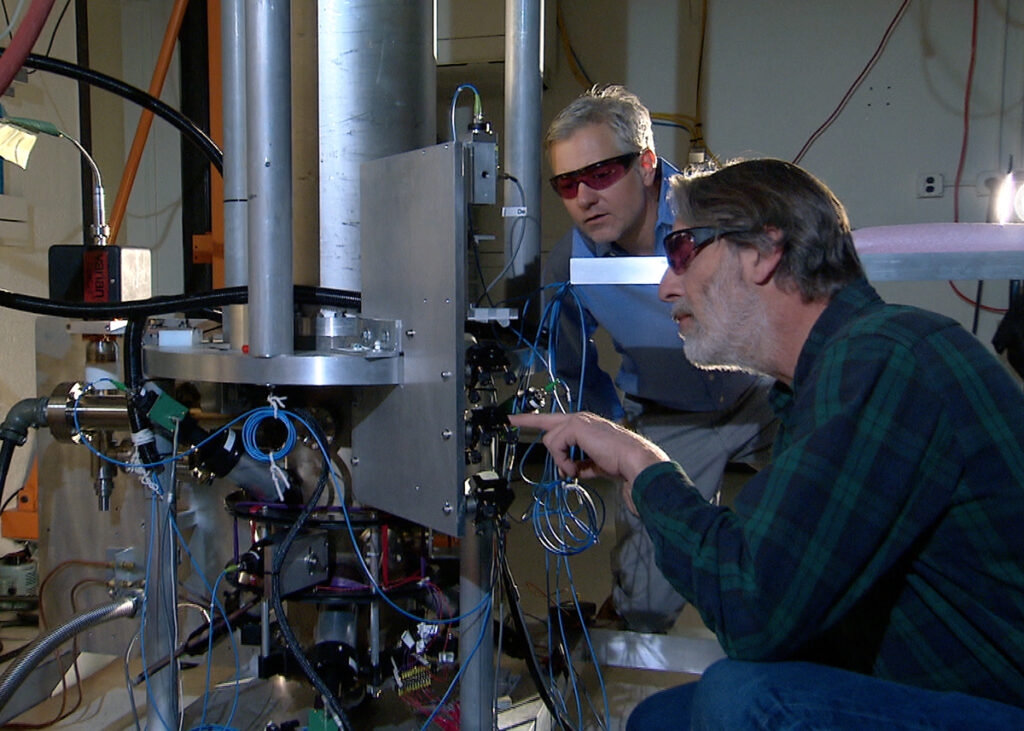
NIST physicists Steve Jefferts (foreground) and Tom Heavner with the NIST-F2 caesium fountain atomic clock, a precursor of the newest NIST-F4 clock. Image: NIST, on Wikipedia.
By James Myers
In everyday life, precise measurements of time down to the nanosecond are seldom crucial. Differences in time measurement are, however, critically important to emerging technologies in the digital era – especially so for quantum computing – and scientists are finding ingenious new ways to increase the precision of time measurement.
To most people, time is always measured the same way: a second, minute, and hour each have the same duration whether they’re counted on a clock in New York or New Delhi. But how is a unit of time defined, and what benchmark ensures that what I call a second is the same as what you call a second? The measurement will soon improve, and the consequences could be technologically significant.
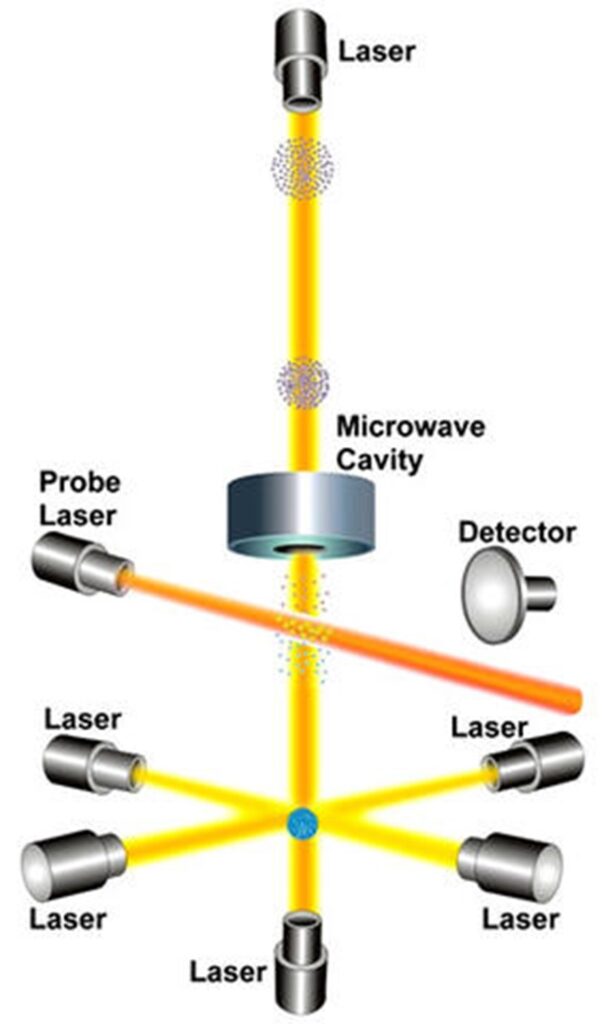
Diagram of fountain atomic clock. Image: NIST
As with current time measurements, the new standard in the United States will continue to be based on energy cycles of caesium atoms. For increased accuracy, hundreds of thousands of measurements will be made on fountains of caesium atoms as they are excited by microwaves and then settle back into their original state. Light beams will be tuned to the same frequency as the oscillating fountains of atoms, somewhat like the way a musical instrument is tuned to match the frequency of a tuning fork.
Since 1967, a second has been defined as 9,192,631,770 cycles of light energy emitted by a caesium atom. A cycle is completed when the outer electron orbiting the atomic nucleus completes a circuit from its highest to lowest state, where it emits light. It’s commonly known that the speed of light is universal, and at 299,792,458 metres per second a tiny measurement variance yields significant differences in results.
The new instrument is being tested at the U.S. National Institute for Standards and Technology (NIST), which is calibrating 18 of its atomic clocks to the frequency of the cascading caesium atoms (which is about 9 gigahertz). Called NIST-F4, the fountain clock follows three earlier versions of fountain clocks and, when testing is complete, will become the main reference for official timekeeping in the U.S.
Other nations operate fountain clocks, including the U.K. and Canada.
In the center of the fountain clock’s chamber containing a gas of caesium atoms, six infrared laser beams cross at right angles. The lasers slow the atoms, condensing a cloud of caesium where the six beams intersect and maintaining them at a minimum motion as if the temperature were near absolute zero.
NIST explains that “two vertical lasers are used to gently toss the cloud upward (the ‘fountain’ action), and then all the lasers are turned off. The controlled cloud velocity is just enough to send the cloud about a meter high through a microwave-filled cavity. Under the influence of gravity, the cloud in a free fall passes the microwave cavity a second time. The round trip up and down through the microwave cavity lasts for about half a second. During the passage through the microwave cavity, the atoms could change from one to the other of their two internal clock states because of the interaction with the microwave signal.”
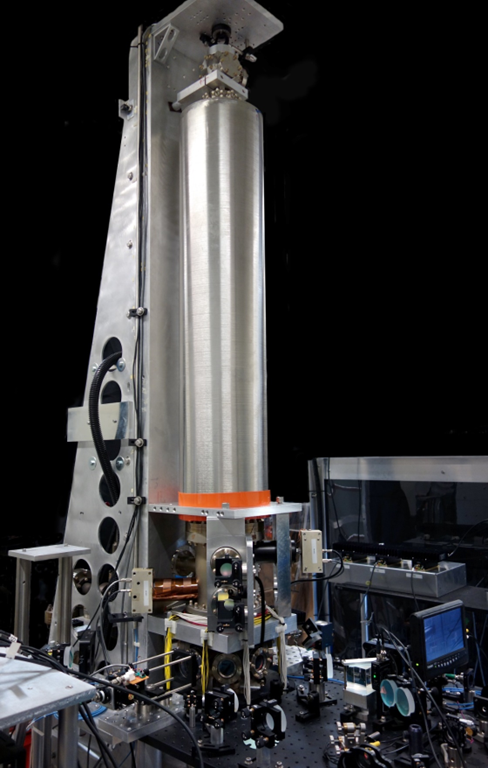
The NIST-F4 caesium fountain clock. Image: A. Novick, NIST
When the atoms leave the microwave cavity, they cross two horizontal laser beams, each set to one of the two clock states that matches the atoms. The atoms absorb the laser light and then release it, in a process called fluorescence, and the light particles released are measured by a detector. Repeating the process thousands of times identifies a microwave frequency that matches the natural frequency of caesium atoms and alters the clock states of most of them to maximize their fluorescence.
As NIST research fellow John Kitching explained to Scientific American, “We cause the atoms to oscillate at their natural resonance frequency. Every atom of cesium is the same, and the frequencies don’t change. They’re determined by fundamental constants. And that’s why atomic clocks are the best way of keeping time right now.”
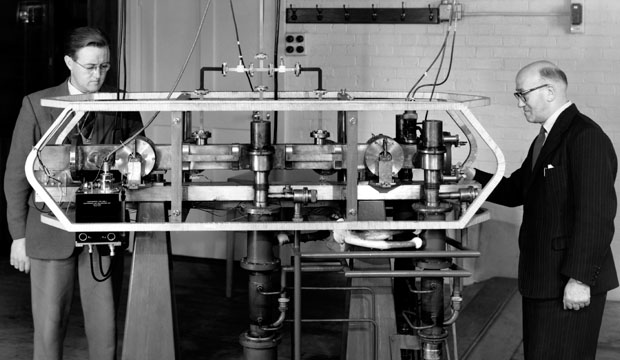
Jack Perry (left) and Louis Essen (right) are pictured with the world’s first caesium-133 atomic clock in 1955 at the National Physical Laboratory in the U.K. Image: National Physical Laboratory, on Wikipedia.
Although they’re the basis for timekeeping, caesium clocks are not the most accurate. Newer “optical” clocks have been developed that use different atoms like strontium or ytterbium operating at a much higher frequency and emitting regular light instead of microwave energy as caesium atoms do. As a result, optical clocks can divide the second into 50,000 more individual components than caesium clocks can.
Even when more precise intervals are now available, a second of time is still defined by the 9,192,631,770 cycles of light energy emitted by a caesium atom.
Scientists are now weighing the benefits and costs of redefining the second based on ultra-precise optical clocks, with some arguing that the existing standard remains sufficient for time-sensitive technologies like GPS navigation. If the second is redefined, it would be necessary to select the precise architecture of the atomic clock on which the standard is based, given the number of different configurations currently in use.

Optical clock frequency comparison to caesium (atomic element CS) clocks that use microwave frequencies. Image: NIST
In 2024, the International Bureau of Weights and Measures (BIPM) published a consultation and research roadmap that could result in a redefinition of the second, based on optical clocks, by 2030. Headquartered in France, the BIPM represents 64 member states which include the world’s major industrialized nations. The BIPM states, “Further improvements in the operational aspects of clocks (stability, uncertainty, robustness) and TF [time and frequency] transfer and comparison techniques present opportunities to accelerate the timeline towards the redefinition.”
Until the definition of the second is changed, however, caesium clocks will likely remain the best way of keeping time and fountain clocks will, at least for the time being, provide the most precise measure of the frequency of caesium atoms.
Craving more information? Check out these recommended TQR articles:
- How Many Languages Are There? Scientists Shed Light on What Animals Other Than Humans are Saying
- Wild Mathematics: Scientific Evidence of the Numerical Abilities of Animals
- Scientists Call for Halt to Creation of Mirror Bacteria, Warning of Global Risk to Life
- Time, the Sun, and Life: Even Bacteria Know When Earth Makes a Seasonal Change
- James Webb Space Telescope: Stunning Images Deliver New Insights on the Big Bang and Early Universe


